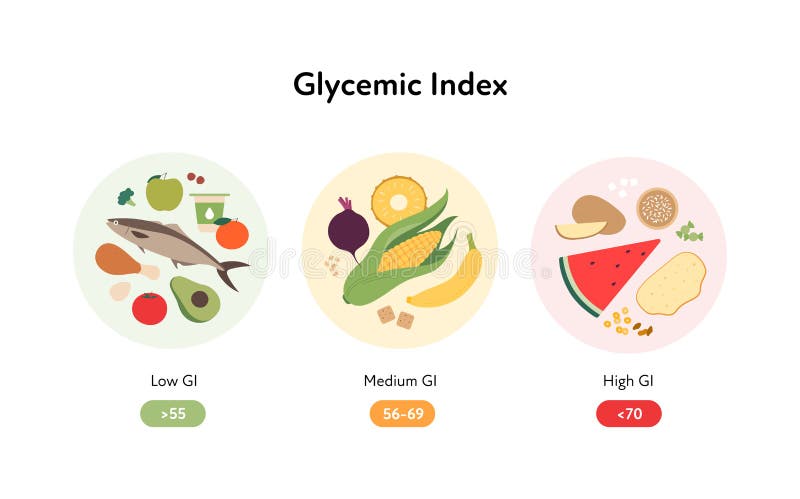Diabetes management is a complex journey that involves many factors, including dietary choices. Understanding the glycemic index (GI) of foods is a powerful tool that can help individuals with diabetes make informed decisions about what to eat. In this comprehensive article, we will explore the concept of the glycemic index, its significance in diabetes management,
Diabetes management is a complex journey that involves many factors, including dietary choices. Understanding the glycemic index (GI) of foods is a powerful tool that can help individuals with diabetes make informed decisions about what to eat. In this comprehensive article, we will explore the concept of the glycemic index, its significance in diabetes management, and how it can benefit individuals from various walks of life, including health and wellness enthusiasts, review consumers, and those seeking advanced insights.
Unpacking the Glycemic Index
What is the Glycemic Index (GI)?

https://thumbs.dreamstime.com/b/glycemic-index-infographic-diabetics-concept-vector-flat-healthcare-illustration-chart-colorful-food-symbol-low-medium-246366509.jpg
The glycemic index is a numerical scale that ranks carbohydrates in foods based on how quickly they raise blood sugar levels after consumption. Carbohydrates with a high GI are rapidly digested and absorbed, causing a rapid spike in blood sugar, while those with a low GI are digested and absorbed more slowly, leading to a gradual and steady increase in blood sugar levels.
How is GI Measured?
Foods are assigned a GI value from 0 to 100, with pure glucose being the reference point at 100. Here’s a breakdown of GI values:
- Low GI (0-55): These foods have a slower impact on blood sugar and are considered beneficial for individuals with diabetes.
- Medium GI (56-69): These foods have a moderate impact on blood sugar and should be consumed in moderation.
- High GI (70 and above): These foods cause a rapid increase in blood sugar and should be consumed sparingly by individuals with diabetes.
The Significance of the Glycemic Index in Diabetes Management
1. Blood Sugar Control
Understanding the GI of foods enables individuals with diabetes to select foods that have a lower impact on blood sugar. This helps in maintaining stable blood sugar levels and reducing the risk of sudden spikes and crashes.
2. Better Food Choices
By incorporating low-GI foods into their diet, individuals with diabetes can make healthier food choices. Low-GI foods are often nutrient-dense and provide sustained energy, making them an excellent choice for overall well-being.
3. Meal Planning
The GI can be a valuable tool for meal planning. It allows individuals to create balanced meals that include a mix of low-GI carbohydrates, lean proteins, and healthy fats, ensuring better control of blood sugar levels.
4. Weight Management
Low-GI foods tend to be more filling and can help control appetite. This can aid in weight management, which is essential for many individuals with diabetes.
Applying the Glycemic Index in Practice
Low-GI Foods
- Whole grains like oats, barley, and quinoa.
- Non-starchy vegetables such as broccoli, spinach, and cauliflower.
- Legumes like lentils, chickpeas, and black beans.
- Most fruits, especially those with high fiber content.
Medium-GI Foods
- Sweet potatoes.
- Whole wheat products.
- Basmati rice.
High-GI Foods
- White bread and white rice.
- Sugary cereals.
- Sweets and sugary snacks.
The Glycemic Index for Different Audiences
For Health and Wellness Enthusiasts
Understanding the glycemic index can be a game-changer for health and wellness enthusiasts. It allows you to optimize your diet for stable energy levels, better weight management, and overall health.
For Review Consumers
If you are in search of products or recommendations related to the glycemic index, look for resources that provide information on low-GI foods and recipes. Additionally, consider reviewing products that offer low-GI options to support your diabetes management goals.
For Enthusiasts Seeking Advanced Insights
For those seeking advanced knowledge, delve into topics such as glycemic load (GL) and the impact of meal combinations on blood sugar. Consulting with a registered dietitian or nutritionist can provide advanced insights tailored to your specific needs.

https://www.myweightlossfun.com/wp-content/uploads/2021/02/Depositphotos_242810188_xl-2015-1-scaled.jpg
Conclusion
The glycemic index is a valuable tool for individuals with diabetes, offering a pathway to better blood sugar control, healthier food choices, and improved overall well-being. Whether you’re a health and wellness enthusiast, a review consumer, or an enthusiast seeking advanced insights, understanding the glycemic index can empower you to take control of your diabetes and make informed dietary decisions. Remember that effective diabetes management involves a holistic approach, including regular physical activity, medication management (if necessary), and ongoing communication with healthcare professionals. By incorporating the glycemic index into your dietary strategy, you can enhance your journey towards better health and a fulfilling life.























Leave a Comment
Your email address will not be published. Required fields are marked with *